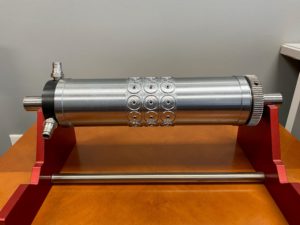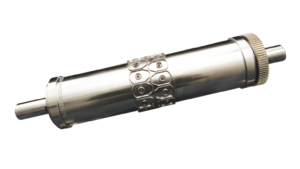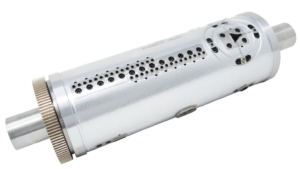TechTalk #3: Essential Tools
At Wilson, we’re always focused on the technical aspects of flexography. This TechTalk is your quick snapshot of key topics in our industry. Let us know what you think.
Three Essential Tools Every Pro Should Know
Converting parts for end users may create a need to remove small slugs and pieces of waste from the die and the web. Keeping the die clear of these parts can be difficult and time consuming but it is necessary to prevent damage to the die. Should the pieces accumulate in the die, it can cause excessive pressure against the inside of the cavity and break the blades out. If the parts are not contained, they can fly in every direction and wreak havoc on print and die cut performances. Fortunately, Wilson Manufacturing has developed waste removal options to manage these challenges.
The three most common solutions are Air-Eject, Plungers, and Vacuum tools. These three methods are used when there is a piece of the web that needs to be cut that cannot be stripped with the normal waste. The Air-Eject and Plunger tools will ensure that the material cannot build up inside the blade cavity and will reduce the risk of the blades breaking. The Vacuum tool helps clear the cavity also, but it also helps to remove the waste material from the web.
AIR EJECT
A die with standard Air-Eject is probably the most traditional method. The air is connected to the tool and air is blown out all the holes at the same time. These are ideal for dies that have only a few cavities on the tool to be cleared. If there are more than 6 holes ejecting air at one time, a tool with Focused Air Eject is recommended. This tool is equipped with a slotted probe through the center that can be adjusted to send the air through just one row across while directing when that happens. This allows for an increased air supply to the one row ensuring better ejection, plus it allows the machine operator to determine where the best collection point will be and direct the waste to be blown there.
When there are a lot of air ejected cavities, especially in alignment with each other, the drilled air holes through the cavities may intersect with each other so an alternate method would be the Manifold Air Eject. This type has the air input holes drilled through the side of the die to intersect with the drilled hole through the cavity. A manifold on the tool connects to the air supply. This reduces the number of holes receiving air at the same time by timing them to match the openings inside the manifold. One factor to take into consideration though is that this manifold can reduce the available width for die-cutting depending on its placement on the tool.
All of these air-eject options must maintain 100 psi at the tool. The focused air and the manifold types will most often work best with the air blowing out of the tool at about the 4 o’clock position.

PLUNGERS
Plunger tools may be used when you cannot use a manifold type, or you do not have an air system that can maintain the 100psi. The plungers are small mechanical devices that are inserted into the cavity with an internal spring depressing and releasing as needed to eject the cut piece.
One major advantage is that the plungers are mechanical and will not require any air force. With a plunger insert though, the area to be removed must be at least .200” x .200”. When using a tool with plungers, it is important to elevate the web as it exits the tool.

VACUUM
Vacuum tools should be used when trying to remove the slug from the web. This is accomplished by the material packing into the die until reaching the center and then is vacuumed out through the side. It is important to review the size of the die journal to ensure it can accommodate the exiting slugs – the journal must be at least .625” larger than the slug. Vacuum tools will require a special bearing block and an industrial vacuum to remove the pieces. Do not use your usual shop vacuum as it is not built for this constant use. You will need an industrial vacuum with at least 6.5 horsepower. Wilson can provide the special bearing block when needed.

Not sure which option will work best for you? Contact your Wilson Representative for a review of your specific application and receive our expert advice!
Ready to get started on your next project?
We’re here to help. Whether you know all the details of your job or need a little guidance, our team of professionals is ready to get to work for you.
